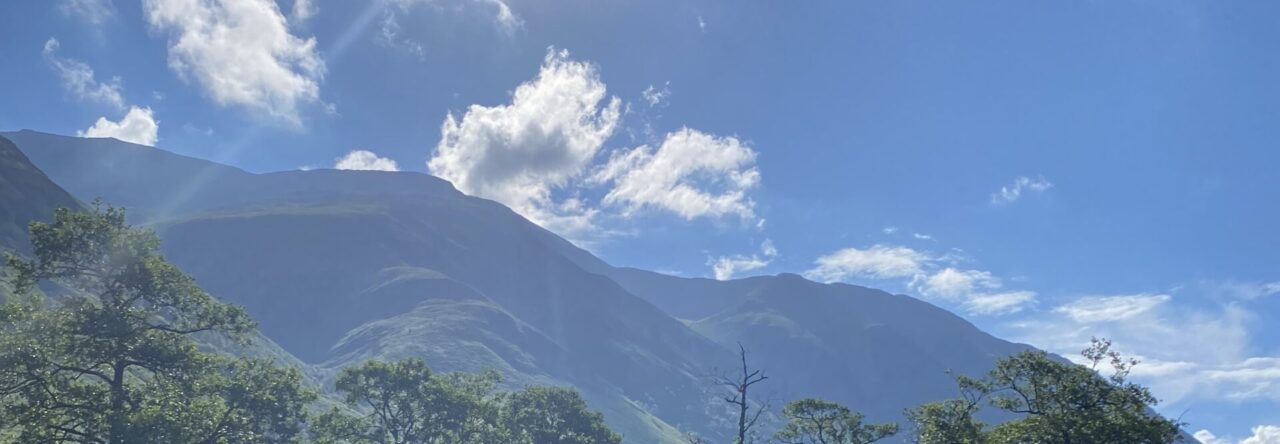Nyctophobia, or fear of the dark, arises when our (arguably) most valued sense is inhibited. As something which many, including me, experienced as a child, this fear typically starts as a result of wild imaginations being uninhibited by the logic of what they can see (First 2005). However, it is also enhanced through numerous contributing factors which I will further explore.
What scared me most as a child was being alone in a dark bedroom at night, as I was worried about intruders coming into the house. I would tune into any noises I could hear around the house, like creaking stairs, which only enhanced my fear as my imagination would go wild. I agree with First (2005), that my fear was enhanced as my thoughts ran away with themselves, as I couldn’t see things within my dark bedroom to distract and reassure me. To counter this, for years I slept with my bedroom door open and the landing light on, so my bedroom was lit and I could see everything with ease. I am thankful that this fear did not last with me into my teenage years, however, given the number of everyday factors that contribute to nyctophobia, perhaps it’s surprising that a greater number of adults don’t have a fear of the dark.
One of the key contributors to my fear of the dark was the knowledge that much inhibited behaviour does happen at night (Devereux 1949), such as burglaries – my main fear. This knowledge was a reinforcement of my fear, suggesting that I had a reason to be scared of the dark as this lack of light and vision is linked with lawbreaking behaviours. The imagery of bad or scary behaviour happening on the streets at night is presented to us from a young age through various media channels (figure 1), and enhances this association between darkness and danger. Even into adulthood, when I am no longer scared of the dark, burglaries and other criminal activities remain what I am sometimes afraid of when in certain darkened settings.
Figure 1: FunnyBones children's tv theme titles emphasising darkness(Slurpy Studios Animations 2018). Whilst the main characters are not necessarily 'bad', for children, skeletons pose a negative image associated with the dark.
When our sight is inhibited, our other senses are heightened to compensate for the loss of a visual acuity (Morris 2011). This explains why I would tune into the eery sounds of footsteps or creaking stairs in my house as I lay awake in the darkness. These sounds would make my imagination fire, as instead of thinking logically about the sounds of my parents moving around, instead, I would picture these sounds as being created by intruders in the house. Sight and knowledge are strongly related, and the unknown of what exactly each sound is, results in fear. This demonstrates how the darkness itself contributes to nyctophobia, rather than the fear just constituting negative associations with darkness.
Other factors that contribute to nyctophobia that could be further explored include:
- Religious beliefs associating light with divinity (Edensor 2015)
- Language enforcing negative associations with darkness (Edensor 2015)
- Emotional and sensitive characteristics (First 2005)
Word count: 500
Bibliography
Devereux, G. (1949) ‘A note on nyctophobia and peripheral vision’ Bulletin of the Menninger Clinic. 13 (3), pp. 83-93
Edensor, T. (2015) ‘Introduction to geographies of darkness’, Cultural Geographies 22(4) pp. 559-565
Enoch J, McDonald L, Jones L, Jones PR, Crabb DP (2019) ‘Evaluating Whether Sight Is the Most Valued Sense’. JAMA Ophthalmol 137(11), pp. 1317-1320
First, L. R. (2005) ‘Shining a light on nyctophobia (Behaviour: ask the experts)’ Contemporary pediatrics , Montvale, N.J. 22 (4), p18
Morris, N.J. (2011) ‘Night walking: darkness and sensory perception in a night-time landscape installation’, Cultural Geographies 18(3) pp. 315-342
Slurpy Studios Animation (2018) FunnyBones – Intro Theme Tune Animated Titles, [Online] Available at: <https://youtu.be/YeqqskFen68> [Accessed 28/03/2022]



Leave a Reply